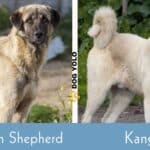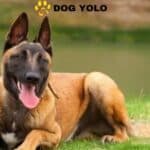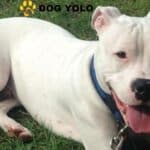The Miniature Husky is an enchanting breed that captures the heart of dog lovers everywhere. This compact version of the Siberian Husky offers the same beauty, energy, and personality as its larger counterpart, but in a smaller, more manageable package.
Whether you’re drawn to their striking blue eyes or their wolf-like appearance, the Miniature Husky has a lot to offer.
In this in-depth guide, we’ll uncover everything you need to know about the Miniature Husky, including their origins, temperament, care needs, and whether they’re suitable for families and apartment living.
We’ll also compare them with other wolf-like breeds, provide care guides, and discuss the controversies surrounding this miniature dog breed.
Are Miniature Huskies Real?
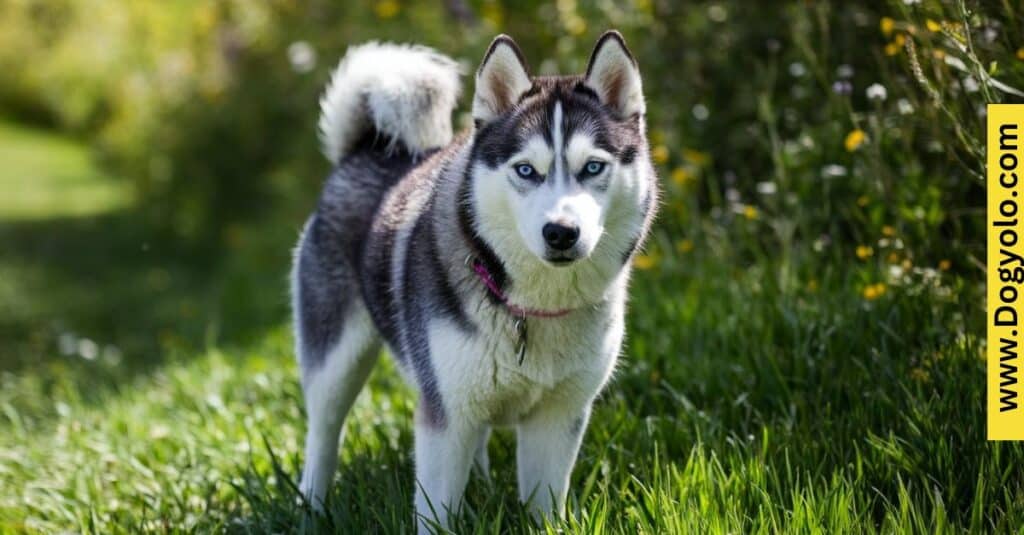
Yes, Miniature Huskies are very real, and they’re not just a product of wishful thinking or clever crossbreeding. They are genuine Siberian Huskies, bred to be smaller.
This is achieved by selectively breeding the smallest individuals within the standard Siberian Huskies, without introducing another breed. This practice has been carefully managed to maintain the integrity of the breed while reducing the size.
The Miniature Husky typically weighs between 15 to 35 pounds and stands at around 13 to 17 inches tall. Though smaller in size, they retain all the characteristics of their larger counterparts—athletic, energetic, and with a wolf-like appearance.
Read more about Meet Packet Bully
Breed History and Origins
The Siberian Husky is a member of the northern breed group, originally bred by the Chukchi people of Siberia to work as sled dogs. Their stamina, endurance, and resilience made them indispensable in harsh arctic environments.
The Miniature Husky, on the other hand, is a more recent creation, developed in the 1990s by breeders like Bree Normandin, who sought to produce a more compact version of the Siberian Husky.
This selective breeding was aimed at creating a tiny Husky that could fit into smaller homes and urban environments without losing the sled dog personality.
While Miniature Huskies are not officially recognized by the Kennel Club, they are still considered purebred, meeting all of the breed standards set for the Siberian Husky.
Physical Appearance
Despite their smaller stature, Miniature Huskies are strikingly similar to full-sized Siberian Huskies. Here’s a quick comparison of their dimensions:
| Feature | Miniature Husky | Standard Siberian Husky |
|---|---|---|
| Height | 13 – 17 inches | 20 – 24 inches |
| Weight | 15 – 35 pounds | 35 – 60 pounds |
| Coat Length | Medium to long | Medium to long |
| Eye Color | Blue, brown, or bi-eyed | Blue, brown, or bi-eyed |
| Overall Appearance | Wolf-like, compact | Wolf-like, athletic |
Their coat is dense and double-layered, providing insulation from cold weather, which makes them resemble wolves even more. They often come with blue eyes, adding to their wild, feral appearance.
The wolf resemblance is a major factor in their popularity, with many owners drawn to their lupine look.
Coat Colors
- Black and white
- Gray and white
- Red and white
- Agouti (rare)
The coat colors and markings mirror those of the standard Siberian Husky, contributing to their wild yet approachable allure.
Temperament
When it comes to personality, Miniature Huskies are playful, energetic, and incredibly loyal. They are known for their affectionate nature towards their human family, though they can be a bit aloof with strangers.
Their temperament is often described as:
- Energetic: They require plenty of exercise and mental stimulation to stay happy.
- Loyal: They form strong bonds with their owners.
- Stubborn: Their independent streak can make training a challenge.
However, they’re not all work and no play. These dogs are incredibly fun-loving and thrive on companionship. Due to their high energy levels, they can be a handful if not properly exercised.
Their high prey drive also means that they may chase smaller animals like squirrels or even household pets unless properly trained and socialized.
Read more about Cane Corso Mixes
Are Miniature Huskies Good Family Dogs?

The Miniature Husky makes an excellent family pet, especially for active families who can match their energy levels. They are affectionate, and their compact size makes them less intimidating for young children compared to larger Siberian Huskies.
However, they do have a strong hunting instinct, so early socialization is key, especially if there are other pets in the household.
These dogs are natural pack animals and enjoy being around their family, but they’re not the best fit for those who spend long hours away from home.
Miniature Huskies can become destructive if left alone for too long, as they require mental stimulation and physical activity.
Key Traits as Family Pets:
- Good with children: Their smaller size makes them less of a danger during play.
- Bonding: They love to be around their human pack.
- Exercise needs: Families who enjoy outdoor activities like hiking and running will find them a perfect fit.
Are Miniature Huskies Good With Other Pets?
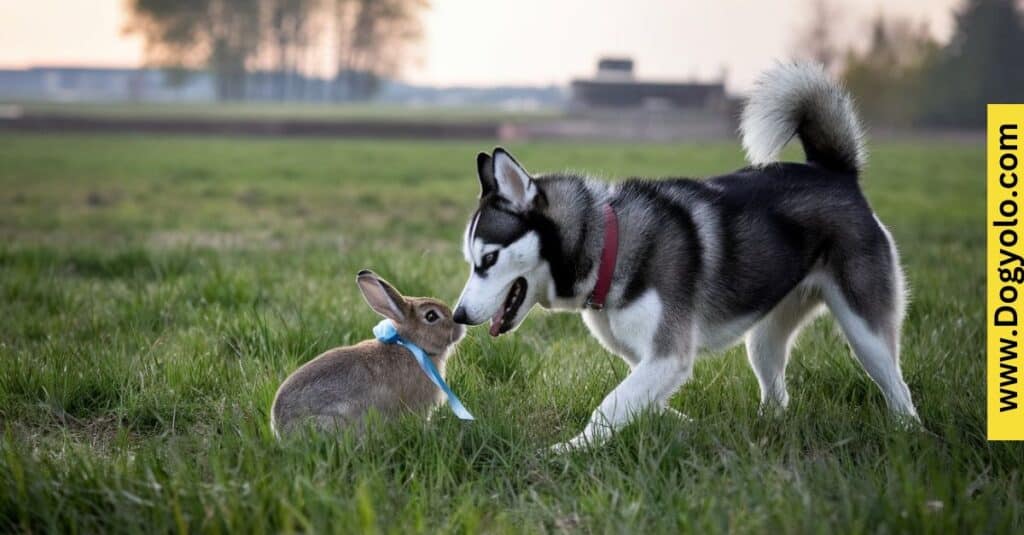
While Miniature Huskies can get along with other dogs, their high prey drive can be an issue around smaller animals like cats, rabbits, or hamsters.
This natural instinct to chase and hunt means you’ll need to carefully supervise interactions between them and smaller pets.
Socialization from an early age is crucial to help curb this instinct. With proper training and early exposure to other household pets, many Miniature Huskies can live peacefully with other animals, but it’s not guaranteed.
Read more about Miniature Labrador Retrievers
Comprehensive Care Guide for Miniature Huskies
Owning a Miniature Husky comes with specific responsibilities. Their energetic nature, independent streak, and grooming needs require thoughtful care and attention.
Below is a breakdown of how to care for this unique breed.
Exercise Requirements
Miniature Huskies are just as energetic as their larger counterparts. They need at least an hour of vigorous activity daily. This can include:
- Daily walks: At least two long walks or jogs
- Playtime: Games of fetch or tug-of-war
- Mental stimulation: Puzzle toys, training games, and learning new tricks
- Off-leash time: In secure areas to help burn off excess energy
Without enough exercise, they may become bored and engage in destructive behaviors, such as chewing or digging. They’re not ideal for sedentary families.
Training Tips
Training a Miniature Husky requires patience and consistency. They are intelligent but independent, which can make them stubborn learners. The best approach is:
- Positive reinforcement: Reward-based training works best.
- Early socialization: Introduce them to different people, places, and other animals early.
- Crate training: Helps with housebreaking and gives them a safe space.
Tip: Because of their intelligence, they quickly become bored with repetitive tasks, so keep training sessions short and fun!
Grooming Routine
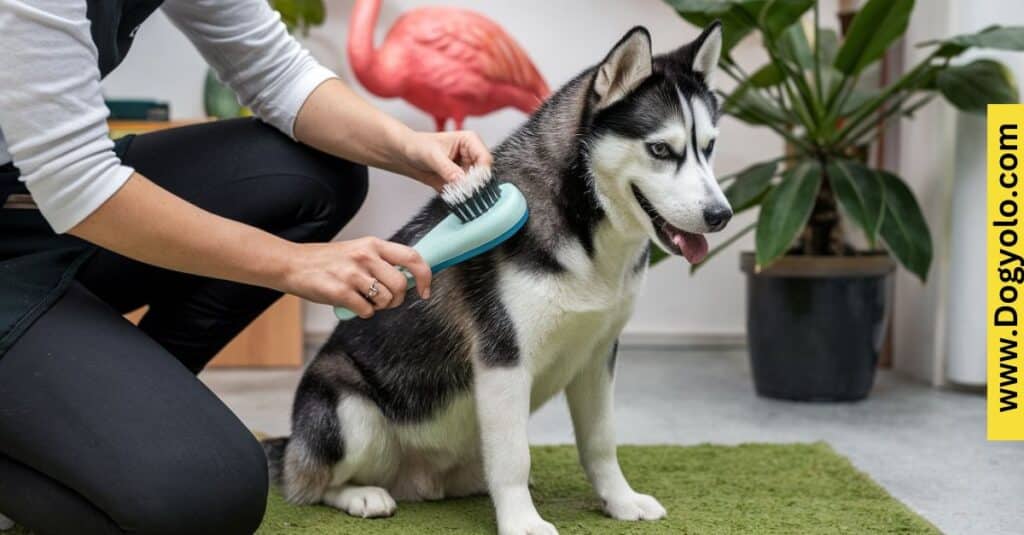
Due to their thick double coat, Miniature Huskies shed quite a bit, especially during shedding seasons (spring and fall). Here’s what you’ll need to manage their grooming:
- Brushing: At least twice a week, more during shedding seasons.
- Bathing: Once every 6-8 weeks, or as needed.
- Nail trimming: Regularly trim their nails to prevent overgrowth.
They are considered moderate to heavy shedders, so they may not be suitable for people with allergies.
Feeding Guidelines
The right diet is crucial to the health and well-being of a Miniature Husky. A high-quality kibble designed for small to medium-sized active dogs is recommended. Here are some general feeding tips:
- Portion control: Overfeeding can lead to weight gain, which is detrimental to their health.
- Meal frequency: Feed them twice a day to maintain energy levels.
- Quality food: Look for brands that list meat as the first ingredient and avoid fillers like corn.
A sample daily diet might include 1.5 to 2 cups of high-quality dry food, divided into two meals. Always ensure they have access to clean water.
Common Health Issues
Like all breeds, Miniature Huskies are prone to certain health issues. Here are a few of the most common:
- Hip Dysplasia: A genetic condition affecting the hip joint.
- Eye Issues: Conditions like cataracts or progressive retinal atrophy (PRA).
- Hypothyroidism: A hormonal condition that affects metabolism.
Regular vet checkups, a healthy diet, and maintaining an active lifestyle are essential for preventing many of these issues.
Read more about Cane Corso Colors
Dogs That Look Like Miniature Huskies
If you’re captivated by the wolf-like appearance of the Miniature Husky but are exploring other options, you’ll be glad to know there are several breeds with similar features.
These breeds share the same arctic look, often boasting thick coats, striking eyes, and a compact build. Each of these dogs carries unique traits, from personality to size, but their lupine look ties them together.
Here’s a deeper dive into some popular alternatives that might pique your interest:
1. Alaskan Klee Kai
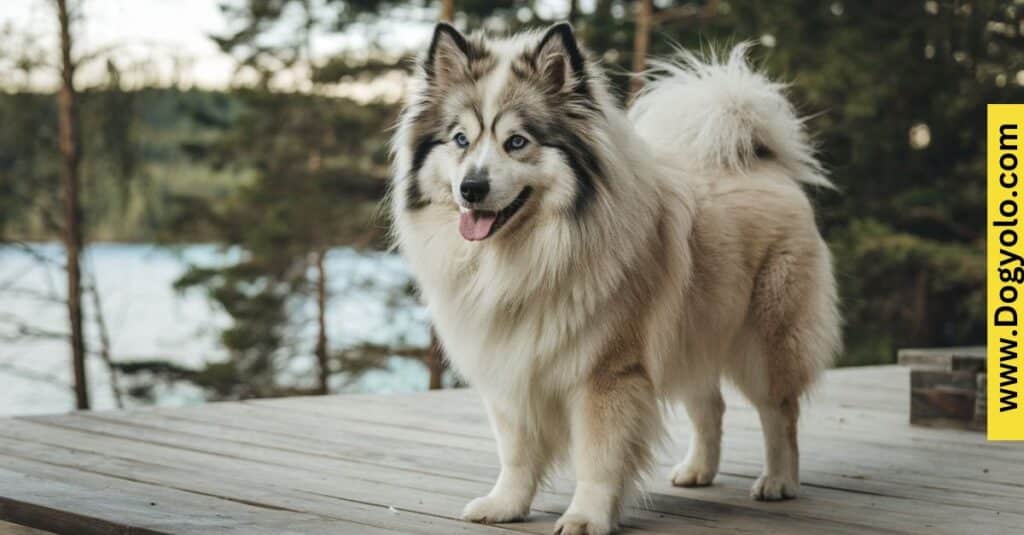
The Alaskan Klee Kai is often confused with the Miniature Husky, and for a good reason—they look strikingly similar.
Bred in the 1970s from Siberian and Alaskan Huskies, the Alaskan Klee Kai was created to be a smaller version of these sled dogs without compromising their agility and alertness.
- Size: 10 – 15 inches tall, weighing 10 – 20 pounds
- Temperament: Loyal but often reserved with strangers, the Alaskan Klee Kai is less outgoing compared to the Miniature Husky. They can be more cautious around new people and situations, which makes them excellent watchdogs.
- Appearance: They feature the same wolf-like appearance with a similar coat, pointed ears, and bright eyes that can be blue or brown, often showing heterochromia (two different colored eyes).
Why Choose the Alaskan Klee Kai?
If you’re seeking a smaller dog with Husky looks but don’t want the high energy levels of the Miniature Husky, the Alaskan Klee Kai is a good option.
However, they can be more independent and aloof, making them slightly harder to bond with if not socialized properly.
2. Keeshond
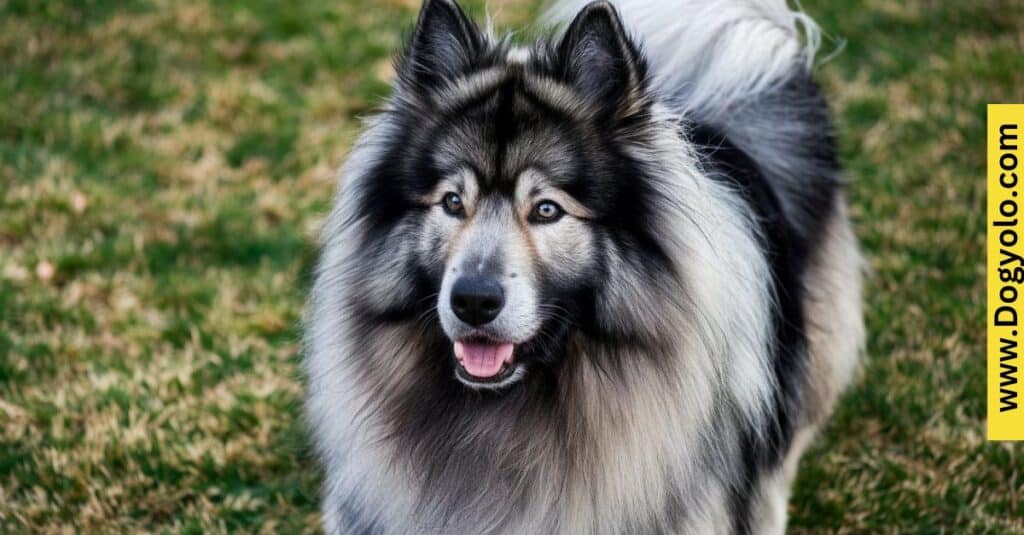
The Keeshond may not immediately resemble a Miniature Husky, but they share some similar characteristics, particularly their thick, plush coat and friendly demeanor.
Known as a “smiling Dutchman” due to the distinct markings around their eyes that give them a perpetual grin, the Keeshond is another breed with a wolf-like coat and build.
- Size: 17 – 18 inches tall, weighing 35 – 45 pounds
- Temperament: Extremely friendly and sociable, the Keeshond is one of the most affectionate and easygoing dogs on this list. They bond closely with their human families and are great around children and other pets.
- Appearance: Their fluffy coat and curled tail give them a somewhat arctic look, though their body is bulkier than the slender Miniature Husky. While they don’t have the same striking blue eyes, their facial markings and thick fur make them an attractive option.
Why Choose the Keeshond?
If you love the idea of a friendly, easygoing dog with some arctic features, the Keeshond is a wonderful alternative.
They’re less intense than Huskies and tend to do better in a family setting where they can be doted on constantly. However, they require regular grooming due to their thick double coat.
3. Pomsky

The Pomsky is a relatively new hybrid breed, a cross between a Pomeranian and a Siberian Husky. This mix results in a dog with the miniature size of the Pomeranian and the wolf-like appearance of the Husky, creating an adorable yet energetic dog.
- Size: 10 – 15 inches tall, weighing 20 – 30 pounds
- Temperament: The Pomsky is playful, intelligent, and affectionate, though they can be a little mischievous. Like Huskies, they are independent and require an owner who is firm and consistent with training. Their Pomeranian side also brings a touch of stubbornness.
- Appearance: The Pomsky often inherits the best features from both breeds. They are smaller in stature, with a fluffy coat and striking eyes, sometimes inheriting the Husky’s bright blue eyes. Their compact size, curled tail, and distinct markings make them one of the cutest alternatives to a Miniature Husky.
Why Choose the Pomsky?
If you’re looking for an even smaller version of a Husky with a playful, spunky personality, the Pomsky is a great fit. Keep in mind, they can be a bit unpredictable in temperament, as hybrids often inherit traits from both parent breeds.
Grooming and exercise needs are high, and they might not be ideal for first-time dog owners.
4. Samoyed
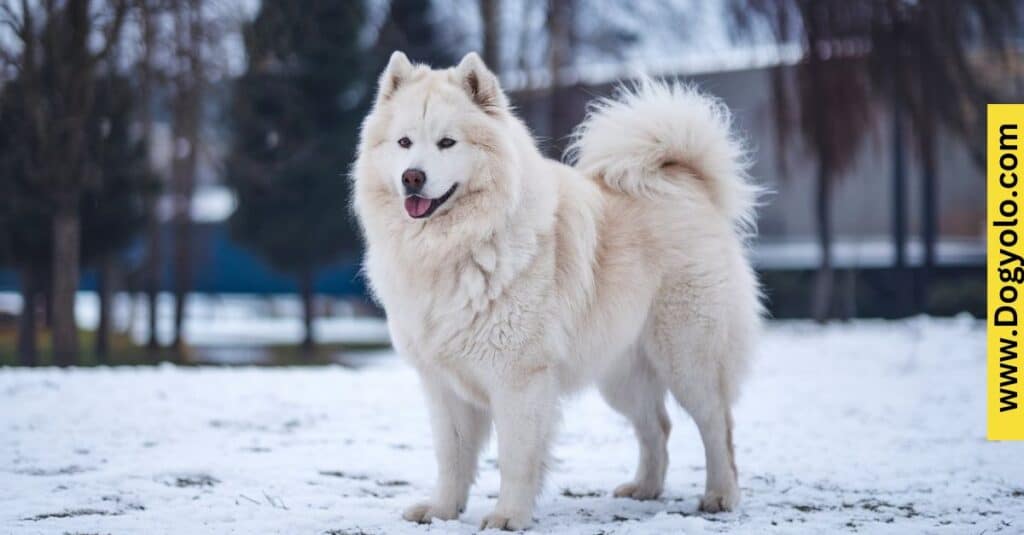
The Samoyed is larger than a Miniature Husky, but they share the same arctic dog lineage and are known for their thick, fluffy coats and friendly demeanor.
Originally bred to herd reindeer and pull sleds, Samoyeds are excellent working dogs, just like their Husky cousins.
- Size: 19 – 23.5 inches tall, weighing 35 – 65 pounds
- Temperament: Known for their “Sammy smile,” these dogs are incredibly affectionate, loyal, and love to be around people. Samoyeds are often called “gentle giants” and are excellent family pets.
- Appearance: Their thick, white, fluffy coats are iconic, and though they are larger, their wolf-like features and striking eyes make them a beautiful alternative to a Miniature Husky. They are often mistaken for Huskies due to their size and coat.
Why Choose the Samoyed?
If you want a larger, more mellow version of a Husky, the Samoyed is a fantastic option. Their coats require intensive grooming, but their calm and friendly demeanor makes up for the extra care they need.
5. Shiba Inu
Though much smaller and more compact, the Shiba Inu has a similar wild look and independent personality that often reminds people of Huskies.
This Japanese breed is known for its agility, boldness, and fox-like features.
- Size: 13.5 – 16.5 inches tall, weighing 17 – 23 pounds
- Temperament: Shiba Inus are confident, sometimes even a little aloof, and can be quite stubborn. However, they are also loyal and loving towards their families. They require an experienced owner who understands how to handle their independent nature.
- Appearance: With their curled tail, sharp features, and upright ears, Shibas often give off a wild or untamed vibe, much like Miniature Huskies. While they don’t have the same fluffy coat or striking blue eyes, their independence and strong prey drive are similar.
Why Choose the Shiba Inu?
For those who love the lupine look but want a smaller, less demanding dog, the Shiba Inu offers a perfect alternative. They are easy to groom but require strong leadership and consistent training.
Which Breed Is Right for You?
If you’re looking for a Miniature Husky alternative, consider your lifestyle, the dog’s temperament, and their grooming and exercise needs. Here’s a quick breakdown of how these breeds compare to the Miniature Husky:
| Breed | Size | Energy Level | Temperament | Grooming Needs | Wolf-like Appearance |
|---|---|---|---|---|---|
| Miniature Husky | 13 – 17 inches | High | Playful, Stubborn | High | Yes |
| Alaskan Klee Kai | 10 – 15 inches | Moderate | Loyal, Reserved | Moderate | Yes |
| Keeshond | 17 – 18 inches | Moderate | Friendly, Outgoing | High | Some |
| Pomsky | 10 – 15 inches | High | Playful, Intelligent | High | Yes |
| Samoyed | 19 – 23 inches | Moderate | Affectionate, Calm | High | Some |
| Shiba Inu | 13.5 – 16.5 inches | High | Independent, Bold | Low | Some |
Each of these breeds shares similarities with the Miniature Husky, but they also bring their own unique traits to the table.
Whether you’re drawn to the Alaskan Klee Kai’s size, the Samoyed’s friendly nature, or the Pomsky’s playfulness, there’s a breed out there for every dog lover who admires the wolf-like appearance and charm of the Miniature Husky bit more playful and easygoing.
Controversy Surrounding Miniature Huskies
The practice of breeding Miniature Huskies has been met with some controversy, primarily around ethical concerns.
Critics argue that breeding for smaller size can lead to health problems, particularly when it’s done irresponsibly. Some of the most common concerns include:
- Health risks: Smaller dogs may be more prone to genetic disorders.
- Ethical breeding: Not all breeders follow responsible practices.
When considering adopting a Miniature Husky, it’s important to work with reputable breeders who prioritize the health and well-being of the dogs over size or appearance.
Conclusion
The Miniature Husky is a delightful breed that offers the beauty and energy of a Siberian Husky in a more manageable package.
Their wolf-like appearance, striking blue eyes, and energetic personality make them a great choice for active families and apartment living, provided they receive the right amount of care and attention.
While they may not be ideal for everyone, those willing to meet their exercise and training needs will find a loyal and affectionate companion in the Miniature Husky.

Vala John is an experienced blogger at Dog Yolo, where she shares her deep passion for all things canine. With years of expertise in dog care, training, and lifestyle tips, Vala’s writing helps dog lovers build stronger bonds with their furry friends. Her insightful posts make her a trusted voice in the pet community, offering practical advice for dog owners of all levels.



